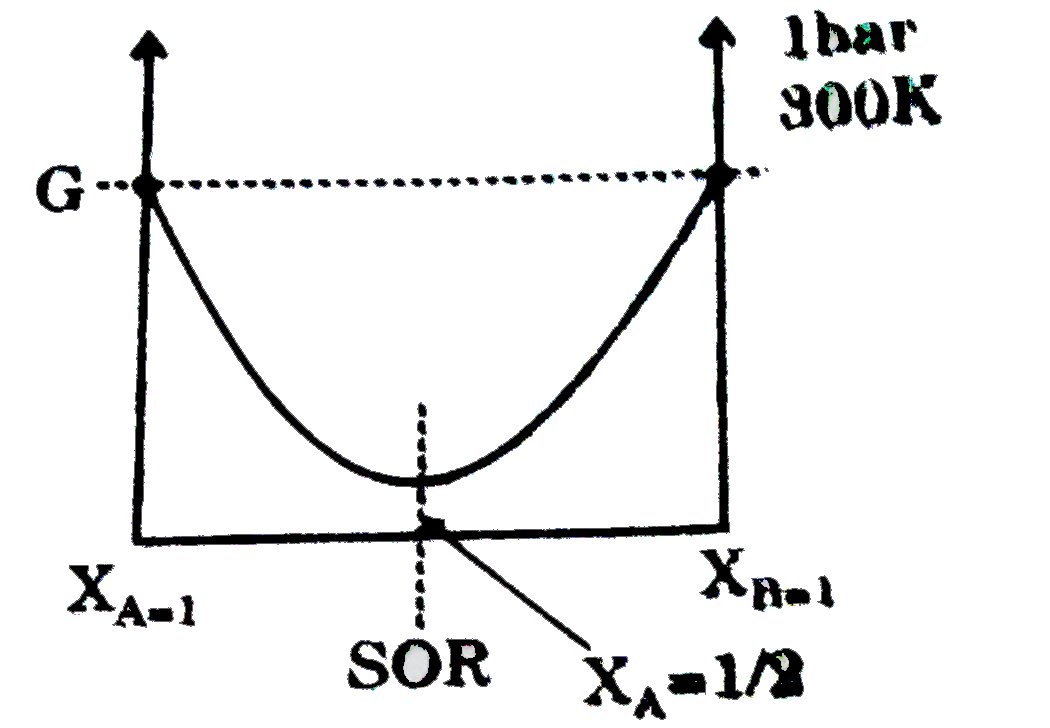In order to perdict variation of Gibbs free energy with progress of reaction at constant temperature and 1 bar pressure, it is important to know realtive stability of the components involved in chemical reaction at standard useful work then the change in Gibbs free energy should be calculated
In the thermite reaction used obtaining energy, aluminium oxide. From the given data identify the option 9s) which is (are) correct.
[Given : ΔH∘fAl−(2)O3=−390kj/mol,
ΔH∘fFe2O3=−176kj/mol,
Density of aluminimum = 2/7 gm/ml, Density of Fe2O3=3.2gm/ml
A
Maximum calorific value of the fuel can be 1000 J/gm
B
Maximum calorific value of the fuel can be 21.47 kj/ml
C
2.14 kg of the mixture can be produce 2500 kj of heat
D
140 ml of the mixture can be produce 280 kj of heat
Text Solution
The correct Answer is:A, B, D
|
Topper's Solved these Questions
- GRAPHICAL INTERPRETATIONBOOK - GRB PUBLICATIONCHAPTER - GRAPHICAL INTERPRETATIONEXERCISE - Comprehension 2
1 Videos
- GRAPHICAL INTERPRETATIONBOOK - GRB PUBLICATIONCHAPTER - GRAPHICAL INTERPRETATIONEXERCISE - Comprehension 3
1 Videos
- GRAPHICAL INTERPRETATIONBOOK - GRB PUBLICATIONCHAPTER - GRAPHICAL INTERPRETATIONEXERCISE - Comprehension 1
1 Videos
- F-BLOCK ELEMENTSBOOK - GRB PUBLICATIONCHAPTER - F-BLOCK ELEMENTSEXERCISE - Subjective type
7 Videos
- HYDROCARBON (ALIPHATIC)BOOK - GRB PUBLICATIONCHAPTER - HYDROCARBON (ALIPHATIC)EXERCISE - Previous years jee questions
28 Videos
Similar Questions
Knowledge Check
In order to perdict variation of Gibbs free energy with progress of reaction at constant temperature and 1 bar pressure, it is important to know realtive stability of the components involved in chemical reaction at standard useful work then the change in Gibbs free energy should be calculated
Which of the following options correctly represects the graph between Gibbs free energy (G0 and state of reaction (SOR) at 1 bar and 300 K for the reaction But -1 ene (A) ⇔ but -2 ene (B)
A B
B C
C D
D
For the equilibrium reaction, the value of Gibbs free energy change is:
A>0B<0C=0D≠0The gibbs free energy for a reversible reaction at equilibrium is
ApositiveBnegativeCzeroDcan be positive or negative
Define Gibb.s free energy and free energy change.
View SolutionVariation of gibbs free energy with Pressure & Temperature || Gibbs free energy and equilibrium constant || Variation of gibbs free energy with reaction progress
View SolutionRelation Between Reaction Quotient And Gibbs Free Energy
View SolutionThe equilibrium constant of a reaction is 0.008 at 298K. The standard free energy change of the reaction at the same temperture is
View SolutionWhich of the following option(s) will show a decrease in Gibbs free energy ?
View Solution
